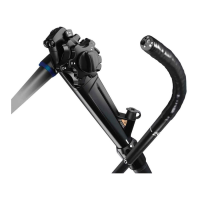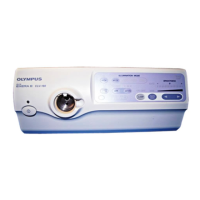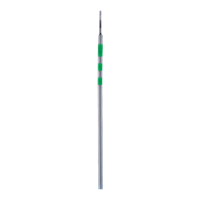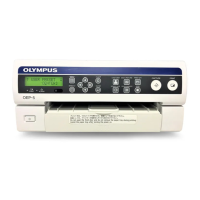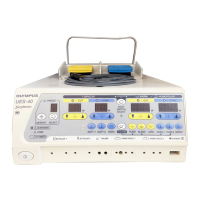Chapter 3 Cleaning, Disinfection and Sterilization Procedures
61
EVIS EXERA GIF/CF/PCF TYPE 160 Series REPROCESSING MANUAL
High-level disinfection
1.
Fill a basin with disinfectant solution at the temperature and concentration
recommended by the disinfectant manufacturer. Use a basin which is deep
enough to allow all equipment to be completely immersed.
2. Immerse all equipment in the disinfectant solution.
3. While immersed, depress and release the pistons of the valves and AW
channel cleaning adapter.
4. Using the 30 cm
3
(30 ml) syringe, flush the interior and recessed parts of
them while they are immersed. Ensure that all air bubbles are expelled.
5. Using the 30 cm
3
(30 ml) syringe, flush the interior and recessed parts of the
cap of the biopsy valve. Ensure that all air bubbles are expelled.
6. Attach the 30 cm
3
(30 ml) syringe to the suction cleaning adapter and flush
the tube with disinfectant solution. Ensure that all air bubbles are expelled.
7. Attach the 30 cm
3
(30 ml) syringe to the luer port of the auxiliary water tube
and flush the tube with disinfectant solution. Ensure that all air bubbles are
expelled (for endoscopes with auxiliary water feeding only).
8. Using a sterile, lint-free cloth and/or 30 cm
3
(30 ml) syringe, wipe and/or
flush all surfaces with the disinfectant solution to remove all air bubbles.
9. Rub the bristles of the cleaning brushes to remove all air bubbles.
10. Soak all equipment for the amount of time and at the temperature
recommended by the disinfectant manufacturer.
Rinsing after high-level disinfection
After high-level disinfection, rinse all equipment according to the procedures
described below.
Use water of appropriate microbiological quality. Once removed from disinfectant
solution, the instrument must be thoroughly rinsed with sterile water to remove
any disinfectant residue. If sterile water is not available, fresh potable tap water
or water which has been processed (e.g. filtered) to improve its microbiological
quality may be used with 70% ethyl or isopropyl alcohol rinse (see “Non-sterile
water rinse and alcohol flush” on page 63). Consult with your hospital’s infection
control committee.

